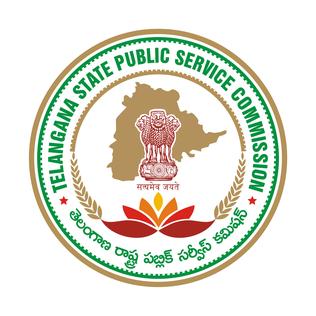The head of government is the highest or the second-highest official in the executive branch of a sovereign state, a federated state, or a self-governing colony, autonomous region, or other government who often presides over a cabinet, a group of ministers or secretaries who lead executive departments. In diplomacy, "head of government" is differentiated from "head of state" although in some countries, for example the United States, they are the same person.

Hyderabad State, also known as Hyderabad Deccan, was a kingdom, princely state, and country, located in the south-central Deccan region of the Indian subcontinent with its capital at the city of Hyderabad. It is now divided into the present-day states of Telangana, the Kalyana-Karnataka region of Karnataka, and the Marathwada region of Maharashtra in India.
The Union Council of Ministers is the principal executive organ of the Government of India, which functions as the senior decision making body of the executive branch. It is chaired by the prime minister and consists of the heads of each of the executive government ministries. Currently, the council is headed by prime minister Narendra Modi and consists of 29 members, including the prime minister. The council is subject to the Parliament of India.
Dewan designated a powerful government official, minister, or ruler. A dewan was the head of a state institution of the same name. Diwans belonged to the elite families in the history of Mughal and post-Mughal India and held high posts within the government.

SirMirza Muhammad IsmailAmin-ul-Mulq was an Indian statesman and police officer who served as the Diwan of Mysore, Jaipur, and Hyderabad.

Mir Laiq Ali was the last Prime Minister of Hyderabad State under the rule of the Nizam, Mir Osman Ali Khan. His official title was "President of the Executive Council of the Nizam of Hyderabad".

Dewan Devdi was the palace of the nobles, the Salar Jungs. It was situated close to Charminar and Chowmahalla Palace in Hyderabad. The word Diwan means Prime Minister, and Devdi refers to mansions of Hyderabadi noblemen.
Rao Bahadur Pemmanda K. Monnappa was a police officer of South India. He served in three Southern states, Madras, Hyderabad and Mysore (Karnataka), at different times. However he is to be best remembered for his contributions towards the integration of Hyderabad into the Union. Monnappa had a career in the Public Service reflected by his titles and medals.

Lieutenant Colonel Saeed ul-Mulk Nawab Sir Muhammad Ahmad Said Khan, Nawab of Chhatari also generally referred to as Nawab of Chhatari was Governor of the United Provinces, Chief Minister of United Provinces, President of the Executive Council of the Nizam of Hyderabad and Chief Scout of India.

Sir Muhammad Akbar Nazar Ali Hydari, Sadr ul-Maham, PC (1869–1941) was an Indian politician. He served as the Prime Minister of Hyderabad State from 18 March 1937 to September 1941.

The Prime Minister's Office (PMO) consists of the immediate staff of the Prime Minister of India, as well as multiple levels of support staff reporting to the Prime Minister. The PMO is headed by the Principal Secretary, currently Pramod Kumar Misra. The PMO was originally called the Prime Minister's Secretariat until 1977, when it was renamed during the Morarji Desai ministry.

Diwan Bahadur Sir Narasimha Gopalaswami Ayyangar was an Indian civil servant and statesman, who served as the Prime Minister of the princely state of Jammu and Kashmir and later a minister in the first cabinet of independent India. He was a member of the drafting committee of the Constitution of India, the leader of the Rajya Sabha, a 'minister without portfolio' looking after Kashmir Affairs, and the Minister for Railways.

The Telangana State Public Service Commission, chiefly, TSPSC is a body created by the Constitution of India to select applicants for civil service jobs in the Indian state of Telangana according to the merits of the applicants and the rules of reservation.
A standstill agreement was an agreement signed between the newly independent dominions of India and Pakistan and the princely states of the British Indian Empire prior to their integration in the new dominions. The form of the agreement was bilateral between a dominion and a princely state. It provided that all the administrative arrangements, existing between the British Crown and the state would continue unaltered between the signatory dominion and the princely state, until new arrangements were made.

Sham Raj II, ,, was an Indian noble who served as a member of H. E. H the Nizam's Executive Council. He was the first Hindu member in the executive council. Some of the ancestors of Sham Raj Bahadur were themselves peshkars and diwan to the Nizams and still earlier their family served at various points in their career to Shah Jahan, the Mughal Emperor. A member of the powerful Rai Rayan family, Sham Raj built a magnificent personal library inside his palace containing 45,000 rare books, which he later generously opened to public.

Sham Raj I ; born as Renuka Das Bhalerao,; popularly known as Raja Sham Raj Rai Rayan, was a general, a statesman, and an Indian noble who served as Prime Minister of Hyderabad. He is also known as Raja Shan Rai Rayan Renuka Das.




























